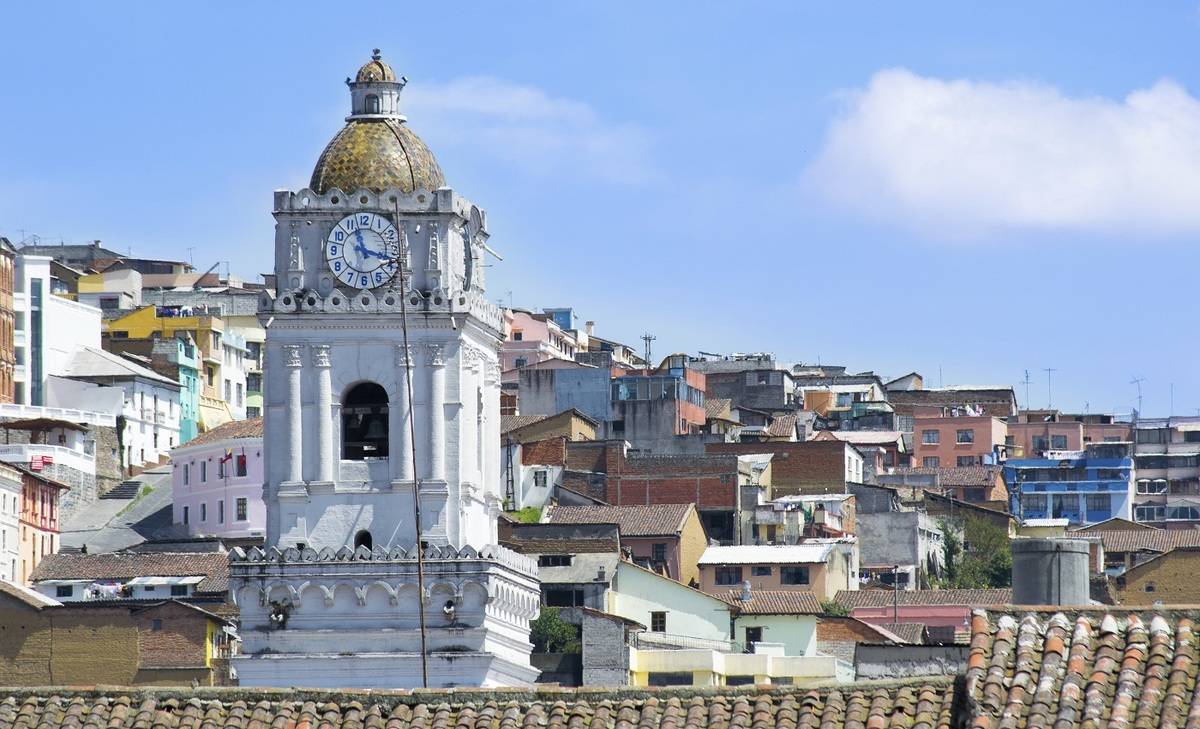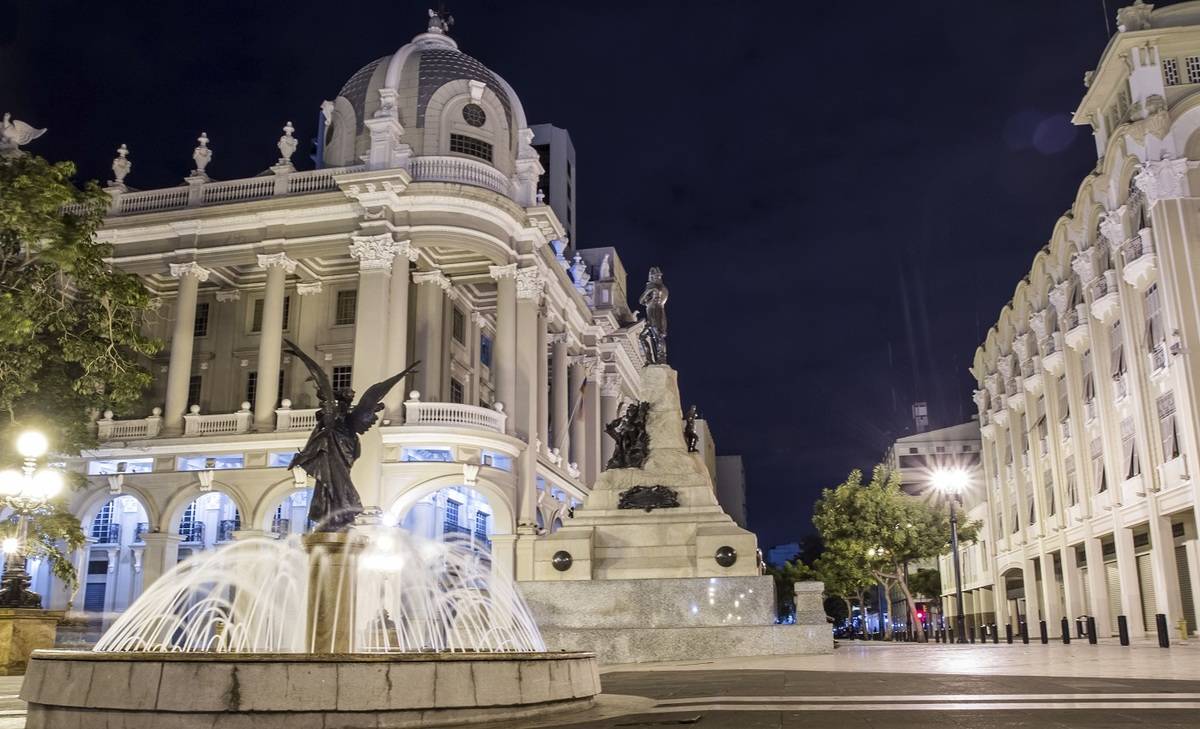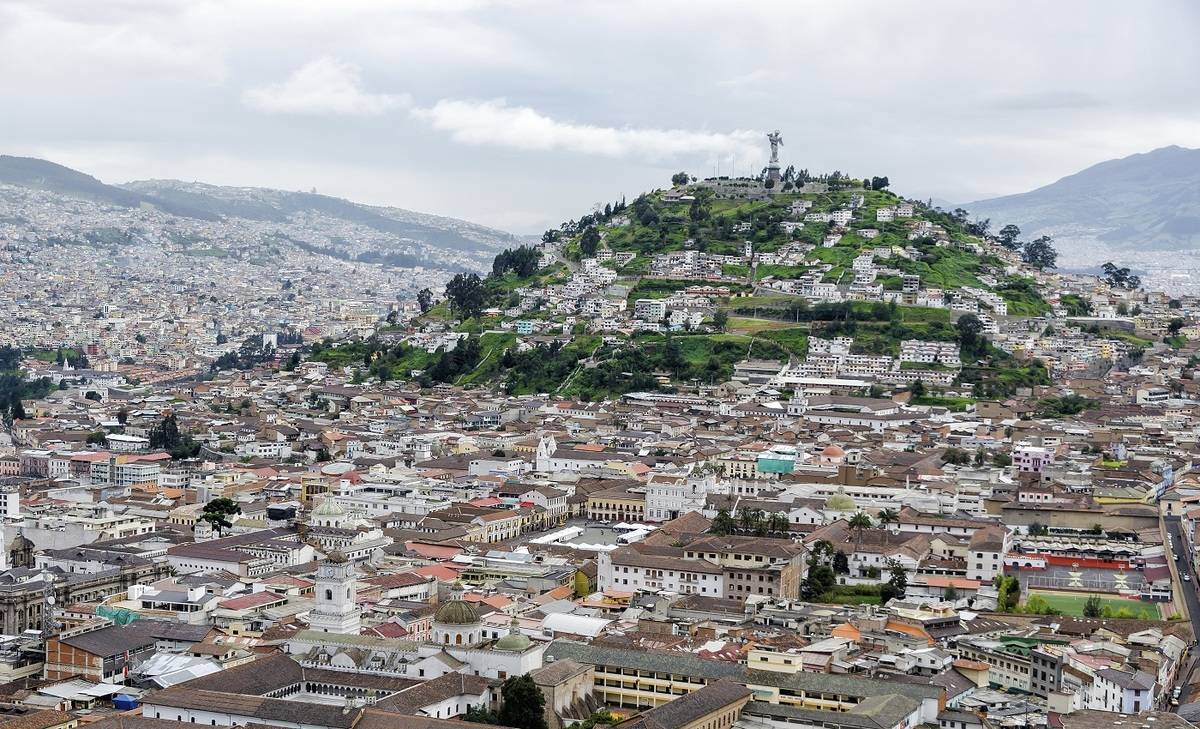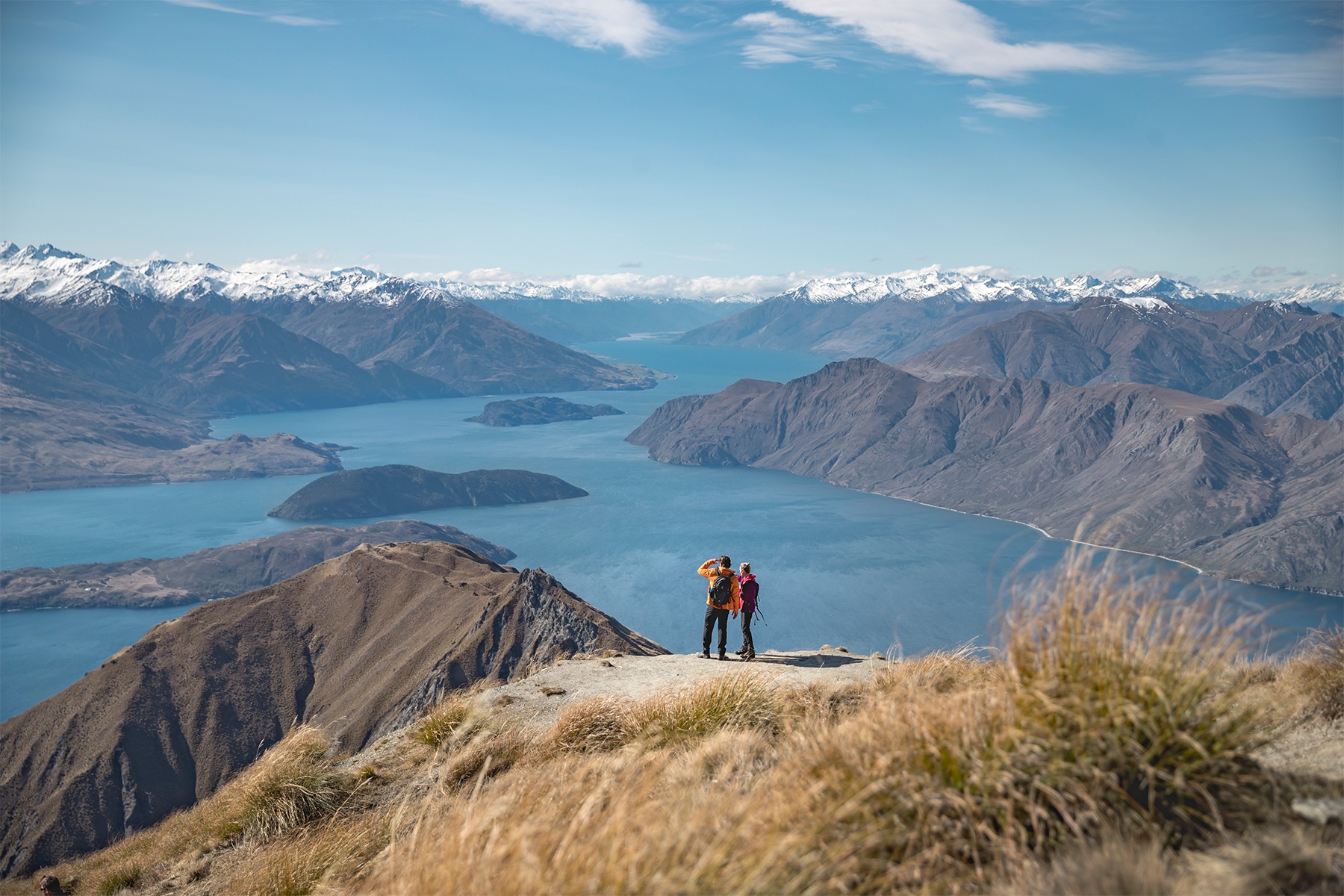Albatross: Ecuador's Highlands and Galapagos
16 Days
This comfortable classic group journey takes you to Ecuador's contrasting landscapes, lifestyles and cultures. In addition, there’s a week spent cruising the wildlife theatre of the Galápagos Islands.
Sitting at the crossroads of the equator and the high Andes, this small country encompasses an extraordinary diversity of geography and climate, and this comfortable journey takes you to its contrasting landscapes, lifestyles and cultures. The trip begins in the capital, Quito, a UNESCO World Cultural Heritage Site, which sits amid a bowl of snow-capped mountains and active volcanoes; and continues south, along the Avenue of the Volcanoes via the Inca ruins of Ingapirca, to the beautiful colonial city of Cuenca and the upland wilderness of Las Cajas National Park.
Leaving the mainland behind, fly 1,000km west over the Pacific to the Galápagos archipelago. This small cluster of islands is home to a wealth of birds and beasts, many of which are ancient and endemic, and your 8 day cruise will introduce you to the highlights of one of the world's most remarkable ecosystems.
from NZD $16300pp

Home » 16 Day Albatross: Ecuador’s Highlands and Galapagos
Itinerary Highlights
- Take a cruise in the Galapagos
- Ride the Devil's Nose railway
- Wildlife watching in the Galapagos
- Tour of Guayaquil
- Explore Cajas National Park
- Walking tour of Cuenca
- Walking tour of colonial Quito
Itinerary in Brief
- Day 1: Transfer to hotel in Quito, overnight in the capital
- Day 2: Walking tour of the city
- Day 3: Head down the Avenue of the Volcanoes to Riobamba via Cotopaxi
- Day 4: Continue south to Alausi
- Day 5: Continue by bus to Cuenca
- Day 6-7: Explore Cuenca, optional visits to Gualaceo and Chordeleg
- Day 8: Drive from the Andes to the tropical coast at Guayaquil. Stop on the way at Las Cajas National Park
- Day 9: Fly to the Galápagos Islands, embark on your motor cruiser
- Day 10-15: Land excursions from the cruise around the Galápagos Islands
- Day 16: Fly to Guayaquil, connect with your extension or your international flight home

Day 1: Transfer to hotel in Quito, overnight in the capital
Those passengers arriving on an international flight will be met by the tour leader or local representative and escorted to the group hotel in the Andean capital of Ecuador.
The active volcano Guagua Pichincha, to the east, glowers over the dynamic city which, at 2,850m, is one of highest capital cities in the world. Quito is divided into two contrasting districts. The modern zone is characterised by towering glass buildings and houses banks, international companies, hotels, shops and restaurants, while the central colonial area where your hotel is located has well-conserved and recently spruced-up white-washed architecture, open air markets and graceful Spanish-style mansions and churches.
Day 2: Walking tour of the city
With its narrow cobblestone streets and white-washed buildings huddling beneath a skyline of extravagant steeples and cupolas, Quito was the first city ever to be named a UNESCO World Heritage Site. Its compact colonial core hides a wealth of architectural and historic treasures around almost every corner, and a short walking tour is an ideal way to begin exploring.
Quito’s historic centre is one of the largest and best-preserved in the Americas, and you’ll visit all the most significant sights including the monastery of San Francisco, the main plaza with its cathedral and governmental palace, and the Basilica del Voto Nacional, best known for its quirky gargoyles representing the native animals of Ecuador, from anteaters to marine iguanas.
The afternoon is free to further explore Quito and some of the museums it has to offer or to relax in your hotel.
Day 3: Head down the Avenue of the Volcanoes to Riobamba via Cotopaxi
Early morning we head south towards the ‘Sultan of the Andes’ – Riobamba. Travelling down the spellbinding Avenue of the Volcanoes. There will be a stop beneath magnificent Cotopaxi volcano and short walk around the lagoon at Limpiopungo before continuing onto Riobamaba where you spend the night in a traditional hacienda on the outskirts of town.
Day 4: Continue south to Alausi
Up early and continue south towards the town of Alausi. Once there we board the train for the exhilarating journey down towards the Devil’s Nose, named after the shape of one of the mountains as it rises steeply from the bottom of the valley. This part of the track drops dramatically in altitude, the train descends on a series of switchbacks as you slowly leave the crisp mountain air and scenery for the warmer tropics of the lowlands.
Please note: Ecuador’s railways are not currently operating and an alternative programme will be offered for this day.
Day 5: Continue by bus to Cuenca
Continue by private vehicle to Cuenca, via Ecuador’s principal Inca ruins of Ingapirca. The remains of the buildings in this raised site date back to the end of the 15th century, before the Spanish conquistadors took hold of the region. The architecture bears all the hallmarks of Inca construction, with some fine mortar-less stonework and typical trapezoidal niches and doorways. Archaeologists believe that the main structure, known as The Temple of the Sun, was used for religious and ceremonial purposes. Today, however, it simply provides welcome shade for grazing llamas and the occasional tourist.
Cuenca is a beautiful 16th-century town, built on the site of an ancient Inca settlement, which was designated a UNESCO World Heritage Site in 1999.
Day 6-7: Explore Cuenca, optional visits to Gualaceo and Chordeleg
Tour the city as you wander the narrow cobblestone streets, marvelling at the architecture. The colonial centre has been beautifully restored; colourful flowers tumble from ironwork balconies and the whitewashed houses have grand wooden doors. The climate here is temperate and you’ll enjoy relaxing with a coffee in a leafy square.
Cuenca is a great place to wander or relax in but if you want to get out of the city you could visit the nearby market towns of Gualaceo, Chordeleg, and colonial Sigsig, set in the foothills of the western cordillera. En route there is a chance to stop and barter for silver and gold filigree jewellery, and to see craftsmen making guitars and using nimble fingers to weave Ecuador’s most famous export, the Panama hat.
Day 8: Drive from the Andes to the tropical coast at Guayaquil. Stop on the way at Las Cajas National Park
Today we travel from the mountains down through the tropical lowlands to the port city of Guayaquil. It is a spectacular drive that truly contrasts the scenery in this small country, as you pass from Andean villages to banana plantations. On the way we stop at the Las Cajas National Park. Beautiful trails pass through this rugged, high-altitude wilderness of grasslands, jagged hills and glacial lagoons. You will be sure to pass herds of serene, grazing llama, and perhaps spot a spectacled bear, a puma or a tigrillo (relative of the ocelot), all of which inhabit the area, as do many species of bird, including the Andean condor and, at the other end of the scale, the tiny hummingbird.
Guayaquil, Ecuador’s largest city, is situated on the banks of the River Guayas, and has gone through something of a transformation in the last few years. The expanse of waterfront has been made into an outdoor architectural showpiece, and restoration work has taken place along the city’s main thoroughfare and in the historical neighbourhood of Las Peñas. Time permitting, you can take a walk from the frenetic, noisy open market at La Bahia, and past the colonial naval shipyard to the Malecón (the waterfront promenade), Guayaquil’s crowning jewel. Stroll past tropical gardens, markets and street cafés, and head to Santa Ana Hill and Las Peñas, a district of brightly-coloured wooden houses and ramshackle streets dating back to the 16th century.
Day 9: Fly to the Galapagos Island, embark on the MC Seaman Journey
You say goodbye to your Journey Latin America tour leader, who will take you to the airport for an early morning flight to Baltra Island (105mins), part of the Galápagos archipelago. Once you’ve paid an entrance fee, your naturalist guide will be waiting to take you to Puerto Ayora, around 40mins away, and here you board your motor yacht.
The Galápagos Islands emerged 6 million years ago after a spate of volcanic activity, and have become home to unique animal and plant species. The islands were the inspiration for Charles Darwin’s theory of evolution, which formed the basis for his revolutionary book ‘The Origin of Species’, published in 1859.Although geologically these islands are constantly on the move, they remain suspended in time, with giant tortoises, iguanas, penguins, numerous bird species and a wealth of rare flora all thriving there. For many, the fascinating and unique wildlife and natural beauty of the islands are matched by the thrill of being at sea. Find a spot on deck as you make your way through the ocean, trailed by flocks of birds and playful dolphins.
The boats are relatively small, creating an informal atmosphere, and the service is of a high standard; the crew is attentive and the food very good. Cabins with en suite facilities are compact but comfortable for your seven nights on board. There are common bar / lounge areas as well as a sun decks. Beach towels are provided, and basic snorkelling equipment can be borrowed.
Day 10-15: Land excursions from the cruise around the Galápagos Islands
The itinerary for your days in the Galápagos is subject to change for operational reasons and according to the rules of the Galápagos National Park authorities. There are normally two landings a day, which will usually include chances to snorkel, on which you are accompanied by your guide in search of the different wildlife that inhabits the islands. Below is a summary of the islands that you visit on this journey, and the animals and birds that can be found on each of them.
Santa Cruz (Indefatigable):
This island has the largest human population of the five inhabited islands. Some 4,000 residents are distributed between the cattle farming communities in the lush highlands and the coastal town of Puerto Ayora, which is mainly dominated by
tourism. The Charles Darwin Research Station here is staffed by international scientists conducting biological research and conservation projects.
Fernandina (Narborough):
The island is one of the world’s most active and impressive volcanoes, having erupted at least 10 times in the last 150 years. The lava fields offer a ‘land without time’ landscape and the island is home to a huge colony of marine iguanas, flightless cormorants and some penguins.
Isabela (Albemarle):
The largest island in the archipelago, it has 5 volcanoes forming a chain down its spine. The most famous sites are situated on the western side, such as the impressive and spectacular inlets of Vincente Roca, with its high cliffs, lava formations and wonderful marine life. Urbina Bay offers an impressive array of birdlife including finches, warblers and mockingbirds, whilst Elizabeth Bay lined with mangroves is home to turtles and rays.
James (Santiago):
The island is one of black rocks and little shade, and the western coast is pitted with lava pools and caves which are home to a wealth of marine life. You may well see herons and oyster catchers as well as Galápagos fur seals playing in the deep, cool water pools, and marine iguanas grazing on algae beds alongside colourful Sally Lightfoot crabs.
Rabida Island (Jervis) is unique because the red colour of the rocks and sand. The volcanic material in this island is very porous and external factors as rain, salt water and sea breeze have acted as an oxidizing agent. A short walk along a trail lead us to a coastal lagoon behind the beach permits the observation of land birds as finches, doves, yellow warblers and mocking birds. At the lagoon there is a colony of flamingos.
Bartolome Island (San Salvador) has an altitude of 114 meters, from where you can observe one of the most beautiful sceneries of the Galapagos Islands such as: Volcanic cones, lunar like craters, lava fields, and the famous Toba formed pinnacle eroded by the sea. There is very little vegetation on this island. It has two breathtaking beaches where marine turtles exist and at the base of the pinnacle, as well as a very small colony of Galápagos penguins.
Day 16: Fly to Guayaquil, connect with your extension or your international flight home
Today we bid farewell to Galapagos Islands where you will be transferred from your hotel to the airport in time for your International departure flight.
| Dates | From | Special Offer |
|---|---|---|
| 25 Jul 2024 - 09 Aug 2024 | NZD $16300pp | Contact us |
| 19 Sep 2024 - 04 Oct 2024 | NZD $16300pp | Contact us |
| 14 Nov 2024 - 29 Nov 2024 | NZD $16300pp | Contact us |
**Prices are per person based on twin / shared accommodation.
**Single supplements may apply
Suggested Accommodation
| City | Accommodation |
|---|---|
| Quito | Hotel Casona de la Ronda |
| Riobamba | Abraspungo |
| Alausi | La Quinta |
| Cuenca | Santa Lucia |
Whats included?
- Internal flights as specified
- All land transport
- Accommodation as specified
- Services of partnered professional tour leader
- All excursions and entrance fees
- Meals as specified
- Use of snorkelling equipment in the Galapagos
What’s not included?
- International airfares
- International airport transfers
- Arrival/departure taxes or reciprocity fees, visa fees where applicable
- Galapagos national park fee US$100
- Transit control card US$20
- Travel insurance
- Optional excursions (please ask us for details)
- Gratuities
- Any items not listed as included
Notes
This tour operates with a minimum of 4 and a maximum of 20 passengers. The minimum age is 12 years. Hotels are subject to change due to availability. The vessel used on the Galapagos Islands is the MC Galapagos Seaman Journey.











